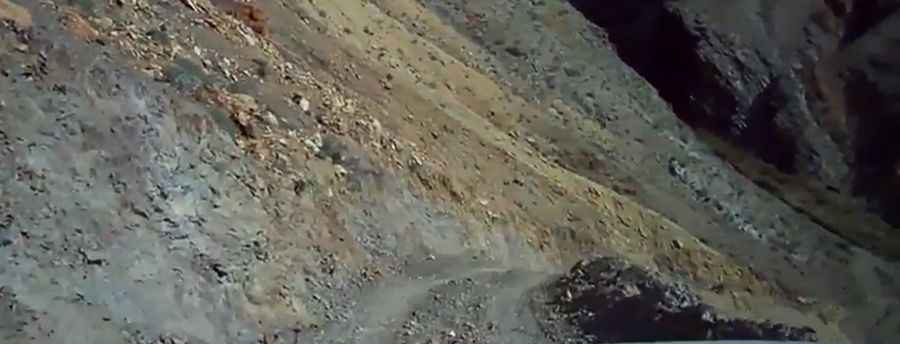Pleasant Canyon Road is a challenging drive in Death Valley NP
Pleasant Canyon Road/South Park 4x4 Loop is a challenging trail located in Death Valley National Park, in the US state of California. A rough 4WD vehicle is necessary due to washouts and large boulders. This narrow, rocky road is suitable for experienced 4WD drivers only, ranking as one of the challenging Backcountry roads in Death Valley National Park.

How long is Pleasant Canyon Road?
The trail, also known as South Park Canyon - Pleasant Canyon loop, is exclusively for 4x4 vehicles. The drive is 23/30 miles long, starting at the intersection of Ballarat Road and Wingate Road just southeast of the ghost town of Ballarat, at an elevation of 1200', and ascending to 7100' at the top of Roger's Pass.
How challenging is Pleasant Canyon Road?
While most of this trail is easy to moderate, the steepest, narrowest sections of both Pleasant Canyon and South Park Canyon are susceptible to water damage and rock movement, occasionally creating challenging conditions. Stock SUVs might struggle to negotiate these stretches, particularly the steep ascent in South Park Canyon when heading from west to east. The road is very rough but facilitates a loop from South Park back down into Panamint Valley.
Who built Pleasant Canyon Road?
The trail includes many mines, presenting a pretty safe path that is wide enough, yet the angles create a sensation of climbing to the top of Everest. For the most up-to-date information on road conditions, visit Death Valley’s website at nps.gov/deva. This old road has a lot of history. Built by the constructors of Thorndike Mine, it was the route the mules used to haul ore down the mountain into Panamint Valley. Refrain from entering mine tunnels or shafts, as they may be unstable and contain hidden shafts, pockets of bad air, and poisonous gas.
How to Prepare for Driving Pleasant Canyon Road?
Death Valley is one of the hottest places on Earth, with record temperatures reaching 134°F (57°C). When visiting, prioritize hydration, avoid hiking during peak heat, and prepare for emergencies. Stick to paved roads in summer, and if your car breaks down, stay with it. Carry extra water and hydrate if you experience dizziness, nausea, or headaches. Adhere to speed limits, use lower gears on steep descents, and always wear a seatbelt to avoid accidents. Exercise caution to avoid rattlesnakes, scorpions, and spiders. Avoid canyons during rainstorms and stay alert for water on roads. Hikers and backpackers should be self-reliant, carry maps, inform others of their plans, and get a free backcountry permit. Dial 911 for emergencies, but be aware that cell phone coverage is limited in many areas.
Pic: B Spec